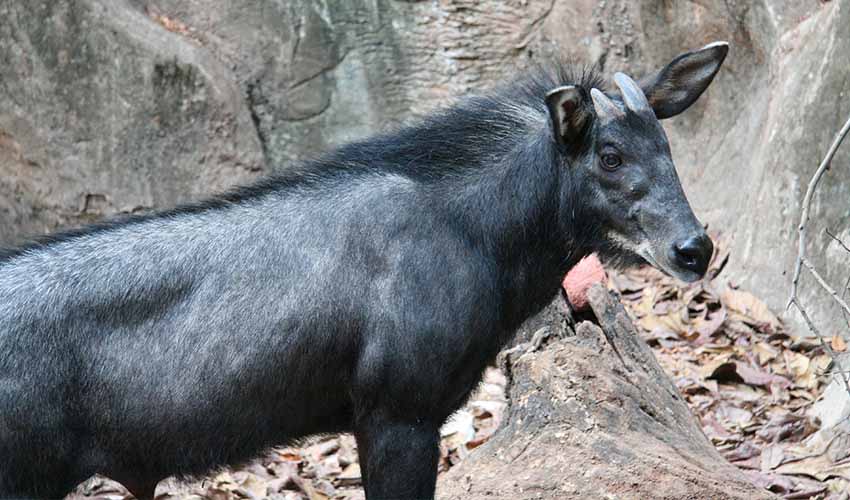Capricornis – Serow
A mix of goat and antelope wrapped in shaggy fur, built for steep slopes and silent survival
Serows — a captivating group of mountain-dwelling goat-antelopes that roam rugged, forested slopes across Asia. These sturdy, medium-sized herbivores are found from the misty mountains of Japan and Taiwan, through China and the Himalayas, to the tropical highlands of Southeast Asia. They carry a timeless look—compact, with coarse, bushy fur that ranges in color from dark charcoal to warm reddish-brown, often streaked or patchy. Each species wears a slightly different coat and silhouette, whether it’s the bushy fur and backward-curving horns of the Japanese serow or the scruffy dark pelt and bold horns of the Sumatran serow. Their bodies are low-slung and muscular, built for life on steep, rocky terrain, and both males and females often bear short, stubby horns that rise above their shaggy ears—subtle yet powerful markers of serow identity.
What sets serows apart is their exceptional mountain terrain mastery and quiet resilience. These solitaries are true specialists—sure-footed and silent—who easily navigate jagged cliffs, dense forests, and steep slopes, aided by their split hooves and muscular limbs. They are browsers rather than grazers, feasting on leaves, shoots, acorns, flowers, and even bark, their diets adapting to forest types and season. In Japan, the serow thrives in beech and cedar woodlands; in Taiwan, it hops across steep slopes and is even known to leap into trees, a rare trait among hoofed mammals. Despite their widespread range, serows are solitary and territorial, marking their home with scent glands near their eyes. Encounters between individuals are rare and can escalate aggressively, showing how seriously they guard their territory.
These goat-antelopes also occupy a special place in culture and conservation. The Japanese serow, in particular, is viewed as a “living national treasure” and was designated a Special National Monument in 1955 to protect it from hunting. Its presence symbolizes Japan’s deep connection to its ancient forests and mountain heritage.
Species in this genus
Mainland serow
Bristly mane from head to back and backward-curving horns give it a tough, distinctive appearance
Japanese serow
Believed that spotting one is thought to bring good luck



